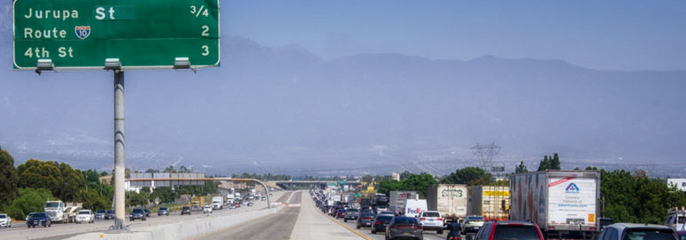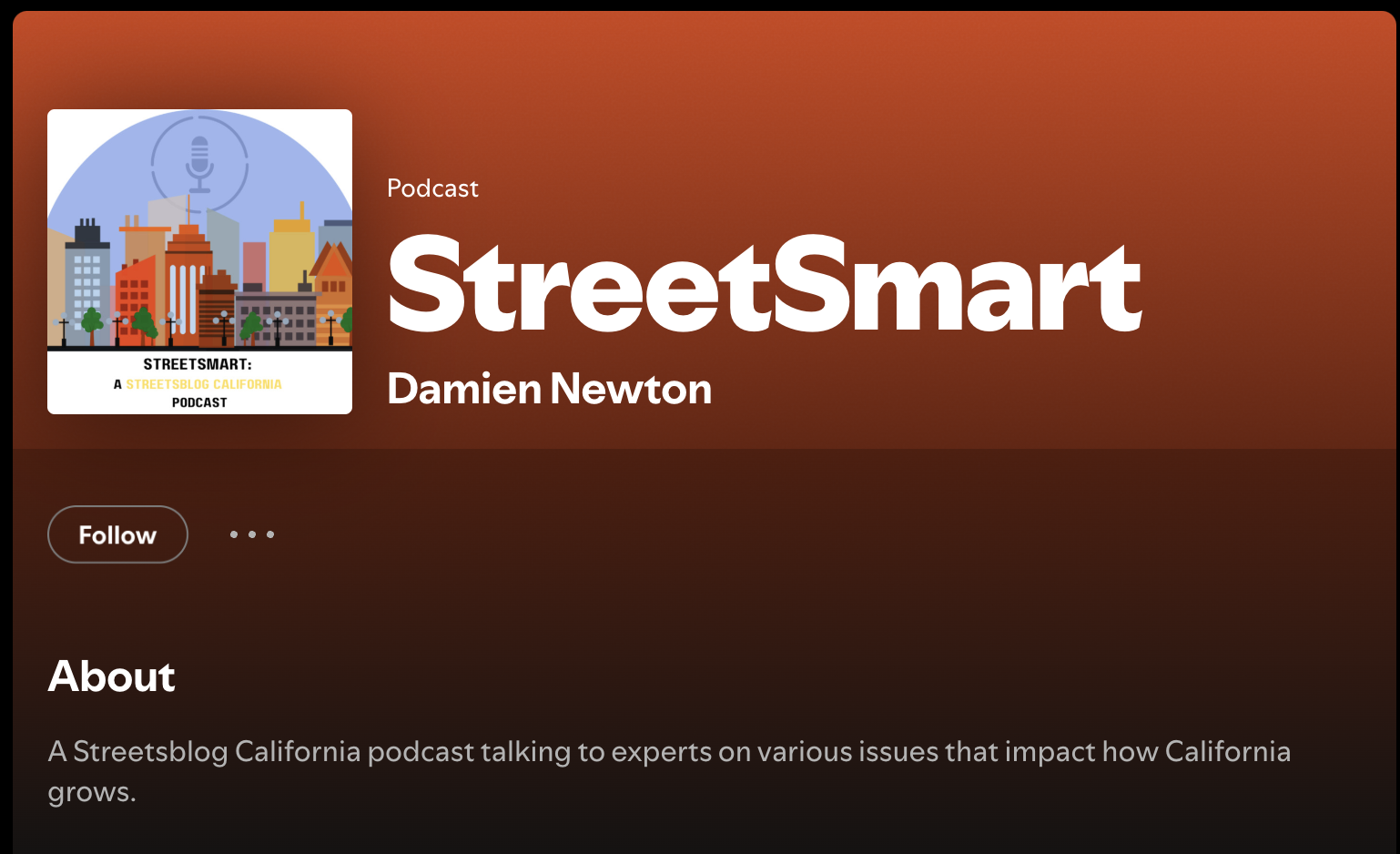A rare thing happened last week at the California Transportation Commission meeting: a highway widening project failed to receive the usual rubber-stamped approval from the commissioners. In some ways, the vote was a fluke. But it is also a warning to highway builders that they need to stop fooling around with the California Environmental Quality Act and state climate policy requirements.
It was late in the course of the two-day meeting, and time was running out, but a long list of projects recommended by staff for funding still needed approval. Commissioners were peeling off to meet other obligations, and their quorum was about to disappear.
This is not an especially unusual situation for the Commission, which generally plows through long lists of projects that staff have already worked on, figuring out whether they are following applicable laws and meeting funding requirements.
The project in question should have been just another in that list: the I-15 Freight Corridor Improvement project in San Bernardino and Riverside Counties was asking for an allocation of some $200 million. It has cleared the environmental process, is receiving funding from multiple sources, is programmed into the State Transportation Improvement Program, has begun construction, and had been approved for future consideration of funding by the CTC in October, at the same time as a pile of other projects.
The project adds auxiliary lanes and express lanes with "price managed/toll facilities" to the I-15.
But Commissioner Joseph Lyou, who is also Executive Director of the Coalition for Clean Air, had questions.
"This project adds 31.9 new lane miles to I-15 in a very congested corridor where there are a lot of problems," he said. "The initial study estimates that an additional 300 million vehicle miles traveled (VMT) annually will result. The NCST's VMT calculator only came up with about 152 million additional VMT - but whichever one you use, it's a whole lot of added VMT."
"We all recognize this issue of induced traffic, and what happens when you add lanes to freeways, especially in a congested area like this," said Lyou. [Editor's note: what happens is congestion continues, driving increases, and a host of other problems result from a focus on car throughput instead of alternative ways to travel.]
"And despite that, at every meeting, we are asked to make one or two exceptions to this, and we widen freeway project after freeway project," he added. "As someone who believes that we need to do what we say and say what we do, it gets pretty frustrating."
"I could go into a lot of detail on the issues I have with this project - in terms of CEQA (California Environmental Quality Act) and NEPA (National Environmental Policy Act) and the VMT impacts, the project hot spots analysis, and the PM2.5 impacts in what is the most highly impacted area in the South Coast basin for particulate matter," he continued. "But I'm not going to do that."
"I could also argue with Caltrans and the San Bernardino County Transportation Authority and our own staff about this, but I don't think there's a reason to; I think this will move forward. But I think some day you might look back and say: Joe was right: we spent more than $200 million that day on something that didn't work."
"I do know there are a lot of multimodal projects that are proposed for the region, but they are not committed to in the environmental document [for this project]," he said. "I hope they will move forward, but there's no real VMT mitigation measures that are committed to either - and that troubles me a lot."
"One thing that I learned on the commission is that these projects are going to keep coming, and we're going to keep making exceptions. It's very troubling that, despite knowing better, we continue to approve project after project after project. And I've reached the point of the end of my patience with it."
"If we're going to do this," he added, "We need to incorporate those things that we know help solve the problem into the actual thing we are approving. They shouldn't be independently done; they should all be part of the same package."
It is rare enough for a California Transportation Commissioner to address the insanity of repeating our mistakes over and over; but Lyou wasn't alone. Commissioner Darnell Grisby agreed with him, and asked him for a quick summary of the issues he had found.
"One of my chief concerns is the way analyses are done," said Lyou. "While we're putting passenger vehicles and light duty trucks onto express lanes, we're then creating more capacity for trucks to go on those lanes, but the [environmental analysis assumes] that there will be no more trucks. In a place like the Inland Empire, where warehouses pop up every day - million-square-foot warehouses - I do think that providing that capacity on that freeway will influence whether we get more million-square-foot warehouses. And it will and can induce truck traffic. Those truck impacts are ignored, allowing [the project] to bypass the transportation conformity hot spots analysis under the Clean Air Act."
He pointed out that the CEQA analysis also sidesteps Caltrans' own rules under S.B. 743 - nothing new to Streetsblog readers. But it was running late and the agenda wasn't getting any shorter, so he left out the details.
Commissioner Hilary Norton moved to approve the item, with a request for a report on how the extra driving would be mitigated. But some commissioners had already left, and three "no" votes from Commissioners Lyou, Grisby, and Adonia Lugo were enough to leave the project on the table.
That doesn't mean it won't be approved in the future; it will come back for more discussion at a future meeting. Meanwhile, though, highway builders should understand they are on notice. Their strategies for ignoring environmental and climate laws - like their reasoning that "auxiliary lanes" are not adding capacity, that they do not have to count truck traffic, or that "adding capacity will reduce congestion and pollution" - are running awfully thin, and fewer people are willing to just accept them without question.
And there is far, far too little conversation about any real alternatives to continually expanding highways, even though we know they exist.






